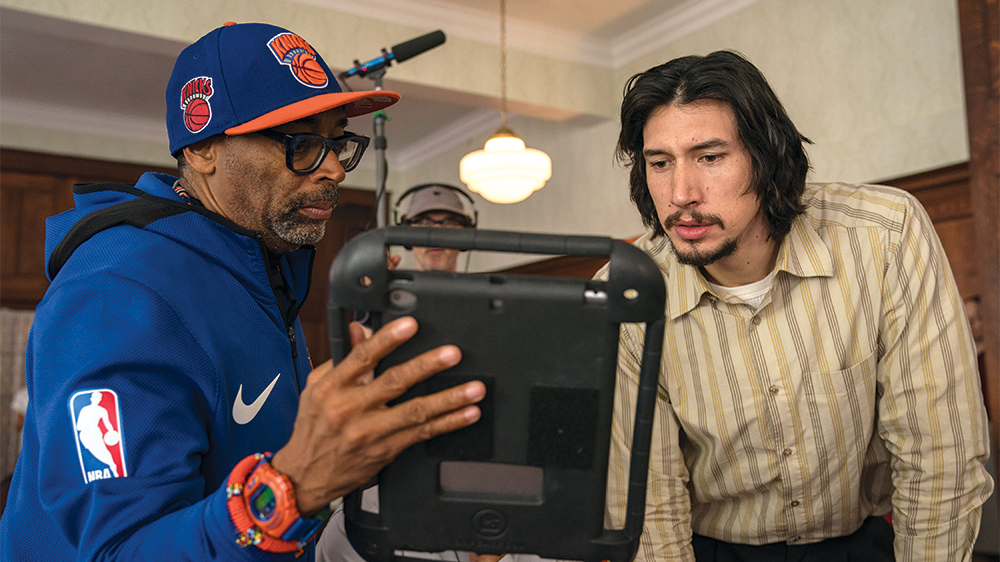‘BlacKkKlansman’ Production Crew Helps Spike Lee Re-Create the 1970s
By Tim Gray
LOS ANGELES (Variety.com) – Spike Lee, who co-wrote and directed Focus Features’ “BlacKkKlansman,” says it was not an easy movie to make, but that everybody worked together. “We were all making the same film,” he explains, “which doesn’t always happen.”
The fact-based story centers on Ron Stallworth, a black cop who went undercover in Colorado Springs in the 1970s to expose local Ku Klux Klan activities. Lee pays tribute to some of his below-the-line colleagues as well as to such respected performers as Harry Belafonte, who co-stars in the film.
Barry Alexander Brown, Editor
“He’s cut almost everything for me; we go way, way back. For the sequence involving Mr. Belafonte, who brings such weight and gravitas — he was in the trenches with Dr. King — Kevin [Willmott, a co-writer] and I wanted him to talk about a real-life incident of lynching, which is the legacy of the Ku Klux Klan. There was an incident in Waco, Texas, in 1916, with the lynching of Jesse Washington, and there is a first-person account witnessed by his best friend. And that’s who we wanted Mr. B. to play. In the sequence, we included photos of lynchings. And we intercut this with the KKK initiation of Flip [Adam Driver] as well as scenes from ‘Birth of a Nation.’ In film school, you’re taught that director D.W. Griffith is the father of cinema, and he invented cross-cutting. I forgot that! So Barry and I were using something that Griffith invented by showing moments from ‘Birth,’ his movie about the Klan!”
Chayse Irvin, Cinematographer
“Amazing photographer. This was the first time we’d worked together. He’s a young guy. When we talked, we both came to the conclusion that we had to shoot ‘’ on film. I wanted it to look like the great films of the 1970s, like ‘Dog Day Afternoon,’ ‘Serpico,’ ‘The French Connection.’ Initially, we didn’t have the budget for film, but everybody made sacrifices and we got great help from Kodak. I know we wouldn’t have had the same effect with digital.
“The sequence of the speech by Kwame Ture [Corey Hawkins] was tricky. Not a lot of people today know who Kwame Ture (or Stokely Carmichael) was. He’s gotten lost in the sauce. I read all of Ture’s speeches. Kevin and I very carefully took pieces from various speeches; we didn’t want this scene to be truncated. It’s a long scene, so it needed to be cinematic. We photographed the audience reacting; plus we had an additional camera in the dressing room, and we grabbed individuals from the crowd to do ‘portraits.’ We wanted to show the effect and the power of his beautiful words. There would be a reawakening of who they are.”
Marci Rodgers, Costume designer
“Marci started on the series ‘She’s Gotta Have It.’ A lot of 1970s films make fun of the clothes. I said to Marci, ‘You’re a lot younger than me, but we’re not going to make fun of plaids, marshmallows, bell-bottoms, none of it.’ It’s easy to look back and laugh, but I’m a child of the ’70s. I wore bell-bottoms. I wore marshmallows. I thought they were hip and I still do. And all that stuff comes back. If you live long enough, everything comes back!”
LaWanda M. Pierre, Hair department head
“I told her I can’t stand fake Afros. We had an open call for people with Afros, their natural hair, and 2,000 people showed up. In some cases, it was ‘No, that’s a wig. Get out of the line.’ La Wanda and I had a long talk. I said [characters] Patrice and Ron [played by Laura Harrier and John David Washington] have to be true to the period. Their Afros cannot look like a wig. I’m not making fun of the period. I’m gonna honor it. In the end, they were wigs, but they looked real, thanks to LaWanda.”
Curt Beech, Production designer
“He had been production designer on ‘She’s Gotta Have It’ for Netflix. We had a B-unit shoot in Colorado Springs, but there was no way we could shoot there; it just didn’t work. Location manager Timothy Stacker and Curt looked all around. We wanted a town for exteriors and found Ossining, New York, which happens to be the home of Sing Sing prison. A lot of stuff was actual locations; the redneck bar is a real bar, for example. A lot of the interiors were shot at Broadway Stage in Brooklyn, New York, like the precinct, which was built.”

